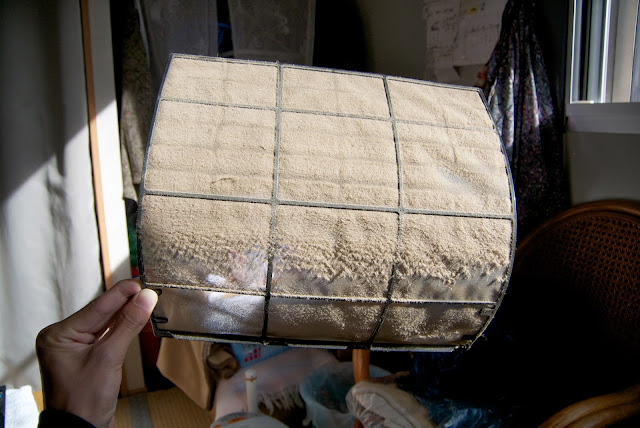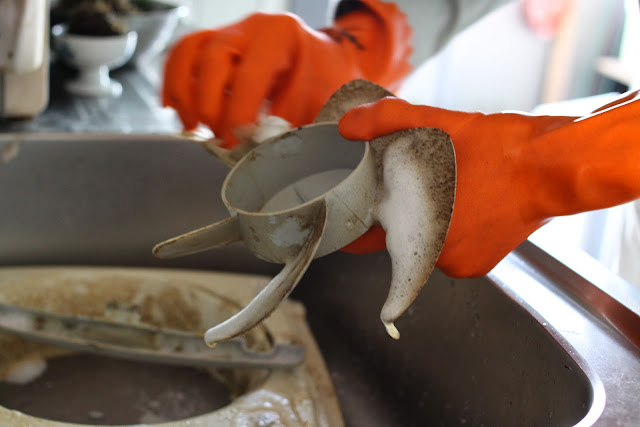From Dec 6th to Dec 8th I traveled to Ishonomaki with Youth for 311 and Team Asunaro to volunteer in some of the temporary housing neighborhoods near Ishinomaki.
Here are photos of what these temporary housing units look like both inside and out. I have read much about these units on the news and how their high occupancy rate is a sign of the staggeringly slow pace of recovery in the region. I was very grateful to see these homes in person and to have been able to sit down with the residents of these homes. During these meetings I was able to ask difficult questions such as "what are the difficulties that you face living in these homes?" and "What prevents you from moving out of these homes, or rebuilding a new one?" The answers that I received to these questions were both surprising and very informative. I have paired these responses with the pictures of the residents whom I talked with.
 |
| We began our trip with a 5 hour drive up to Ishinomaki with the generous ride provided by Team Asunaro, a volunteer group based in Tokyo that makes monthly trips to Tohoku to provide various volunteer services to communities in Tohoku. |
 |
| The wonderful volunteer group that I traveled with. |
 |
| After arriving in Ishinomaki, we got a few hours of sleep at a motel and then made our way to a temporary housing neighborhood. One of the neighborhoods we visited was built in a middle school yard. Flat ground is hard to come by in the small communities around Ishinomaki. |
 |
| Many residents kept small gardens in front of their homes. Some even had cats! |
 |
| The entrance to one of the homes. |
 |
| This small shed-like entrance immediately enters into the unit kitchen. |
 |
| These units kitchens then lead directly to a 2-3 small rooms where the residents sleep. |
 |
| The room of two children. Every inch of these units are crammed with their necessities. |
 |
| The older Japanese homes that these residents had lived in prior to the disaster ventilated naturally unlike these temporary housing units which need AC units. The elderly residents of these homes have a hard time understanding these systems and often do not know how to clean their filters, which can lead to cleanliness problems in the units. |
 |
| We also cleaned out the bugs that got clogged in the light fixtures. |
 |
| Layered with dust. |
 |
| After volunteering, the Ishimori family invited me to sit down and enjoy tea with them. During this time I was able to share my story of how I had fundraised for Northern Japan and was also able to ask them about how they felt about these homes and what problems they face here. I was very surprised to hear that they felt that these homes were reasonable and provided them with everything that they needed for their lives. The grandmother had also said that the homes were in many ways comfortable and that they were not unhappy living in them. Eventually the family did express the desire for more space and private rooms, luxuries that they had enjoyed in their old home before it was swept away in the tsunami. |
 |
| Mrs. Ishimori crafts bracelets in her free time and sells them along with other residents to raise money for their community. |
 |
| After hearing this I asked how much they cost and then reached for my wallet. |
 |
Mrs. Ishimori saw my intentions and handed me a bracelet and asked that I accept it as a gift. Despite my pleas to pay, she had insisted it was a small token of appreciation for my help. The kindness of the Ishimoris was remarkable.
I have their email and have since exchanged messages with them. I will be sure to bring omiyage when I travel to Tohoku again. |
 |
Another couple I interviewed said that the reason residents have not yet moved out was because there is no free land to rebuild their homes on yet. The surrounding area was very mountainous and new land is currently under construction. After this land is constructed, residents can build their own homes or rent out government homes.
Either option will take at least 3 years until they are completed and no viable exit strategy exists until then. |
 |
| Another family that was incredibly welcoming and willing to share their stories with me. These grandparents are currently taking care of their two grandchildren due to tragic circumstances brought about 3 years ago. |
 |
| The cleaning of kitchen vents. |
 |
| The residents of these homes all seemed to know each other and many of them were good friends. |
 |
| A cat walking alongside a temporary housing unit. |
 |
| Shimpei Suga, the founder and leader of Team Asunaro walks with a lady to her home. |
 |
| A small store with a message of thanks to the many volunteers that come to this area. |
 |
| We then enjoyed dinner with the Aso family who provided a feast for us! |
 |
| Fried oysters, a regional specialty. |
 |
| We held a surprise birthday celebration for two of the volunteers! |
 |
| The following morning we toured Onagawa City to see the scope of the devastation and recovery process in the city. |
 |
| A toppled building. There is heated debate on whether this building should be left as a memorial or if it should be torn down to move on from the pain of March 11th. |
 |
| Signs of the recovering fishing industry. |
 |
| The small opening to the ocean where the tsunami surge came through. |
 |
| The 5 hour drive back to Tokyo. |
 |
| By the end of this trip I had made many new friends and now have a means of returning to Tohoku regularly to volunteer! I hope that this trip will be the first of many during my time here in Japan. |







































No comments:
Post a Comment